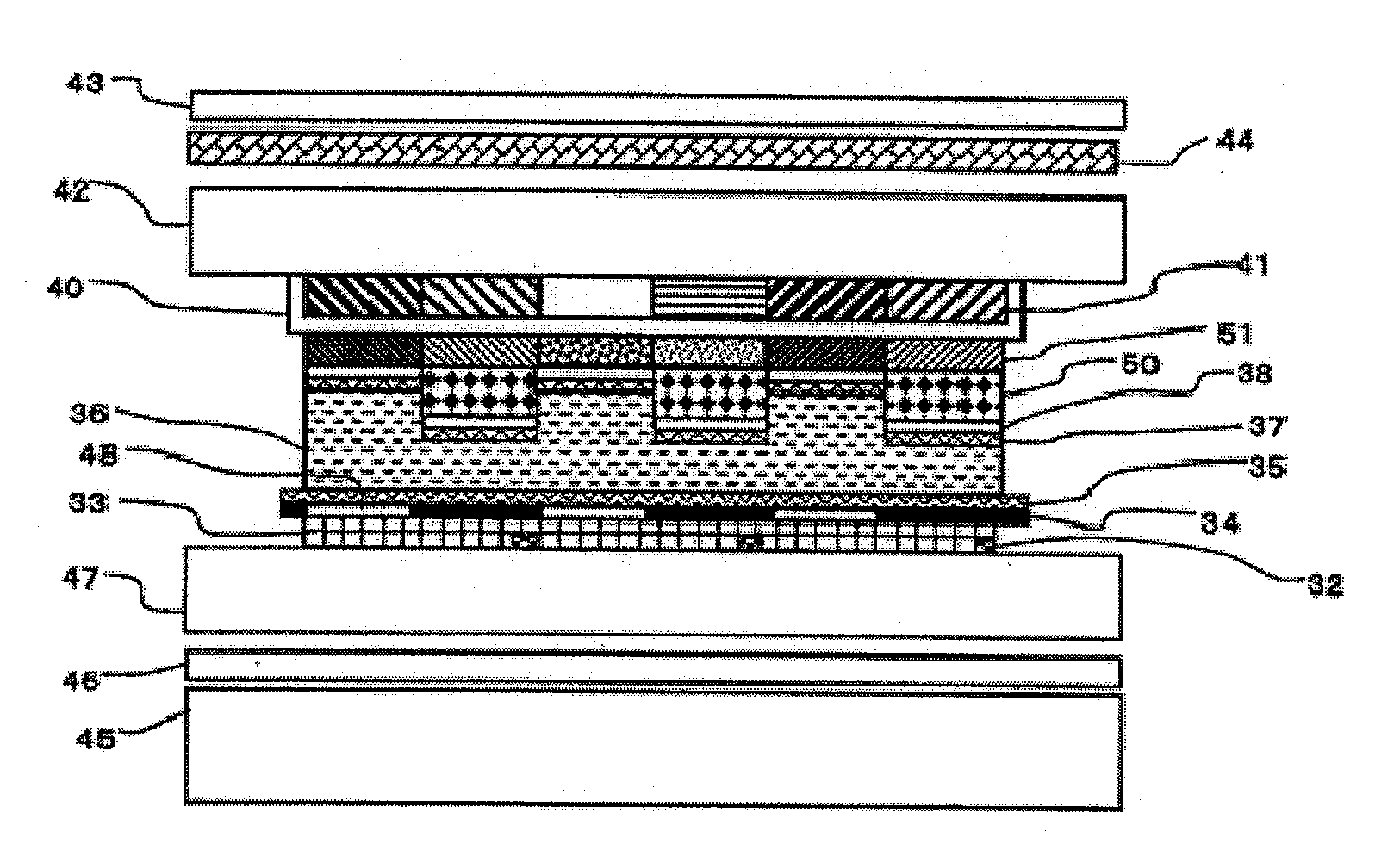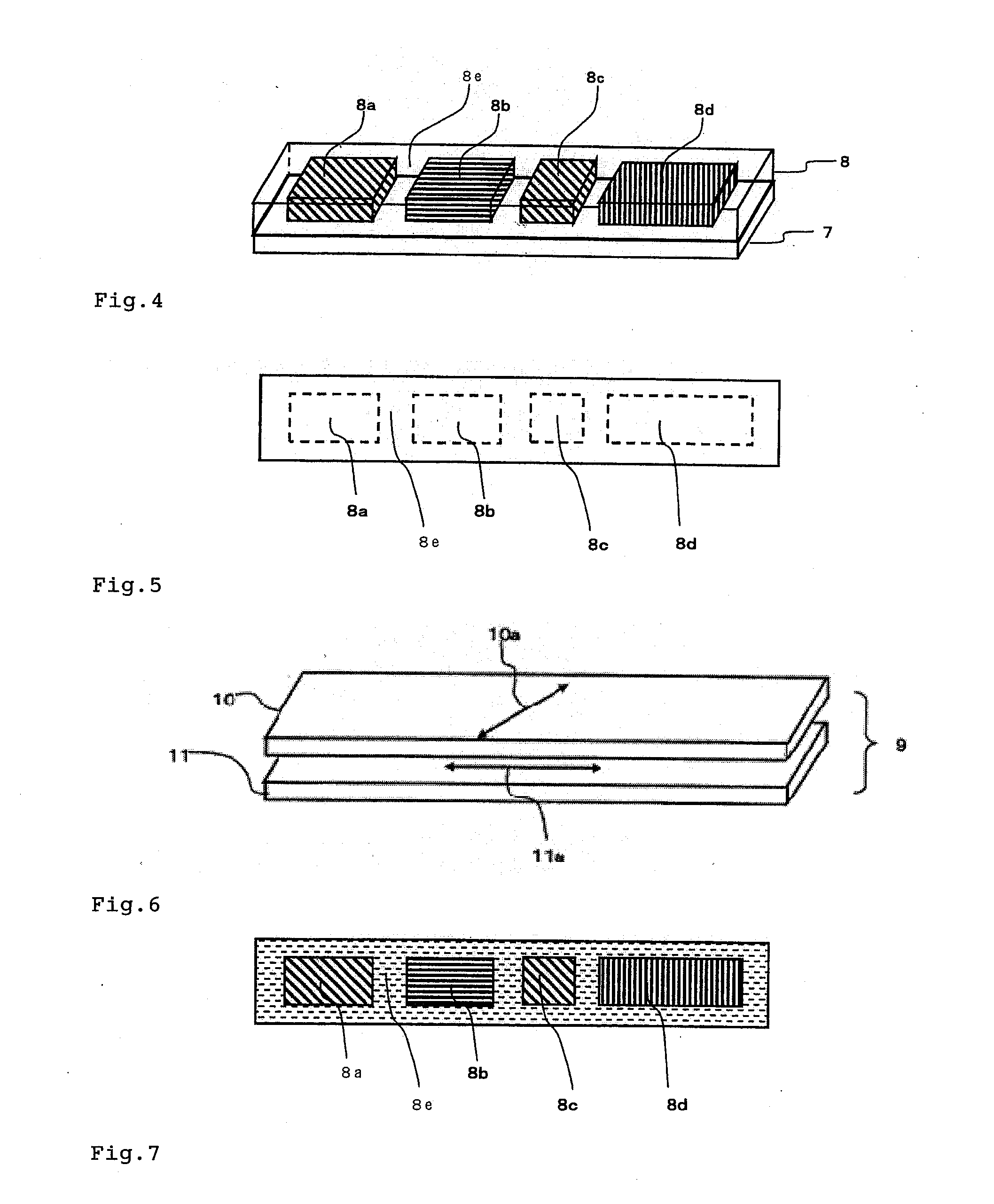Retardation film based on optically aligned liquid crystalline polyimide and optical device
- Summary
- Abstract
- Description
- Claims
- Application Information
AI Technical Summary
Benefits of technology
Problems solved by technology
Method used
Image
Examples
example 1
[0252]
[0253]A mixture of 4-bromophthalic acid diethyl ester (50 g, 166 mmol), 1,7-octadiyne (8.7 g, 82 mmol), dichlorotriphenylphosphinepalladium(II) (290 mg, 0.41 mmol), and copper iodide (158 mmol, 0.83 mmol) was refluxed in a stream of nitrogen in triethylamine (200 mL) for 4 hours. After the completion of the reaction, toluene (500 mL) and pure water (500 mL) were added to perform extraction. The organic phase was washed with pure water (300 mL) once, and was then dried with anhydrous magnesium sulfate. The resultant organic phase was filtrated and the solvent was removed by distillation under reduced pressure. Thus, 1,4-bis(3,4-dicarboxyphenyl)ethynylbutane tetraethyl ester as a target product was obtained in an amount of 42 g in 95% yield. The compound was directly used in the next reaction without being purified.
[0254]5% Pd / C (2.1 g) was added to 1,4-bis(3,4-dicarboxyphenyl)ethynylbutane tetraethyl ester (42 g, 77 mmol), and then the mixture was subjected to a hydrogenation r...
example 2
[0267]A composition formed of 82.2 wt % of Compound (P-1) below, 4.8 wt % of Compound (P-2) below, 9.7 wt % of Compound (P-3) below, and 3.3 wt % of Compound (P-4) below was defined as a (MIX1). A CPI-110P (San-Apro Ltd.) having a weight ratio of 0.030 was added to the (MIX1), and then cyclopentanone having a weight ratio of 2.333 was added to the mixture. Thus, a cyclopentanone solution (B-1) having a solute concentration of 30 wt % was obtained. It should be noted that Compound (P-1) was synthesized by a method described in Macromolecules, 1993, 26(6), 244. In addition, Compound (P-2) and Compound (P-3) were each synthesized by a method described in Japanese Patent Application Laid-open No. 2005-60373. Further, Compound (P-4) was synthesized by a method described in Japanese Patent Application Laid-open No. 2005-263778.
[0268]
[0269]The solution (B-1) was applied to the retardation film 1 with a spinner under the conditions of 1,500 rpm and 15 seconds. Further, the resultant coating...
example 3
[0270]
[0271]A composition formed of 75 wt % of Compound (P-5) below and 25 wt % of Compound (P-6) below was defined as a (MIX2). An IRGACURE 907 (Ciba Japan K.K.) having a weight ratio of 0.03 was added to the (MIX2), and then cyclopentanone having a weight ratio of 2.333 was added to the mixture. Thus, a cyclopentanone solution (B-2) having a solute concentration of 30 wt % was obtained. It should be noted that Compound (P-5) was synthesized by a method described in Japanese Patent Application Laid-open No. 2006-307150. In addition, Compound (P-6) was synthesized by a method described in Macromolecules, 1990, 23(17), 3938.
[0272]
(Retardation Film (I))
[0273]A retardation film (I) was produced by applying the solution (A-2) to a glass substrate same as the production of the retardation film 1 of Example 1. The irradiation energy of polarized ultraviolet light to be applied to a film of the solution (A-2) before baking was set to zero. The resultant retardation film (I) had a thickness...
PUM
 Login to View More
Login to View More Abstract
Description
Claims
Application Information
 Login to View More
Login to View More - R&D
- Intellectual Property
- Life Sciences
- Materials
- Tech Scout
- Unparalleled Data Quality
- Higher Quality Content
- 60% Fewer Hallucinations
Browse by: Latest US Patents, China's latest patents, Technical Efficacy Thesaurus, Application Domain, Technology Topic, Popular Technical Reports.
© 2025 PatSnap. All rights reserved.Legal|Privacy policy|Modern Slavery Act Transparency Statement|Sitemap|About US| Contact US: help@patsnap.com



